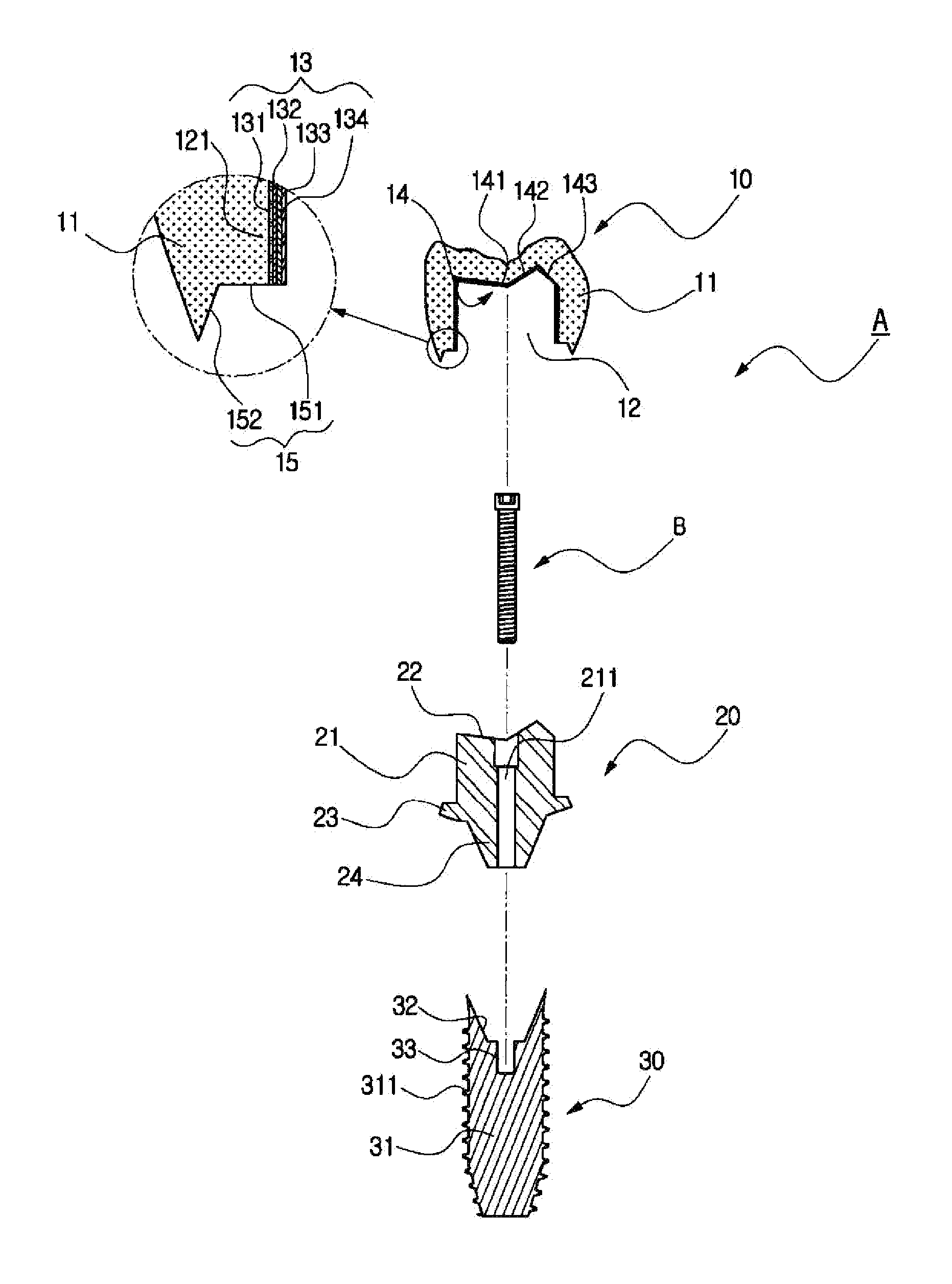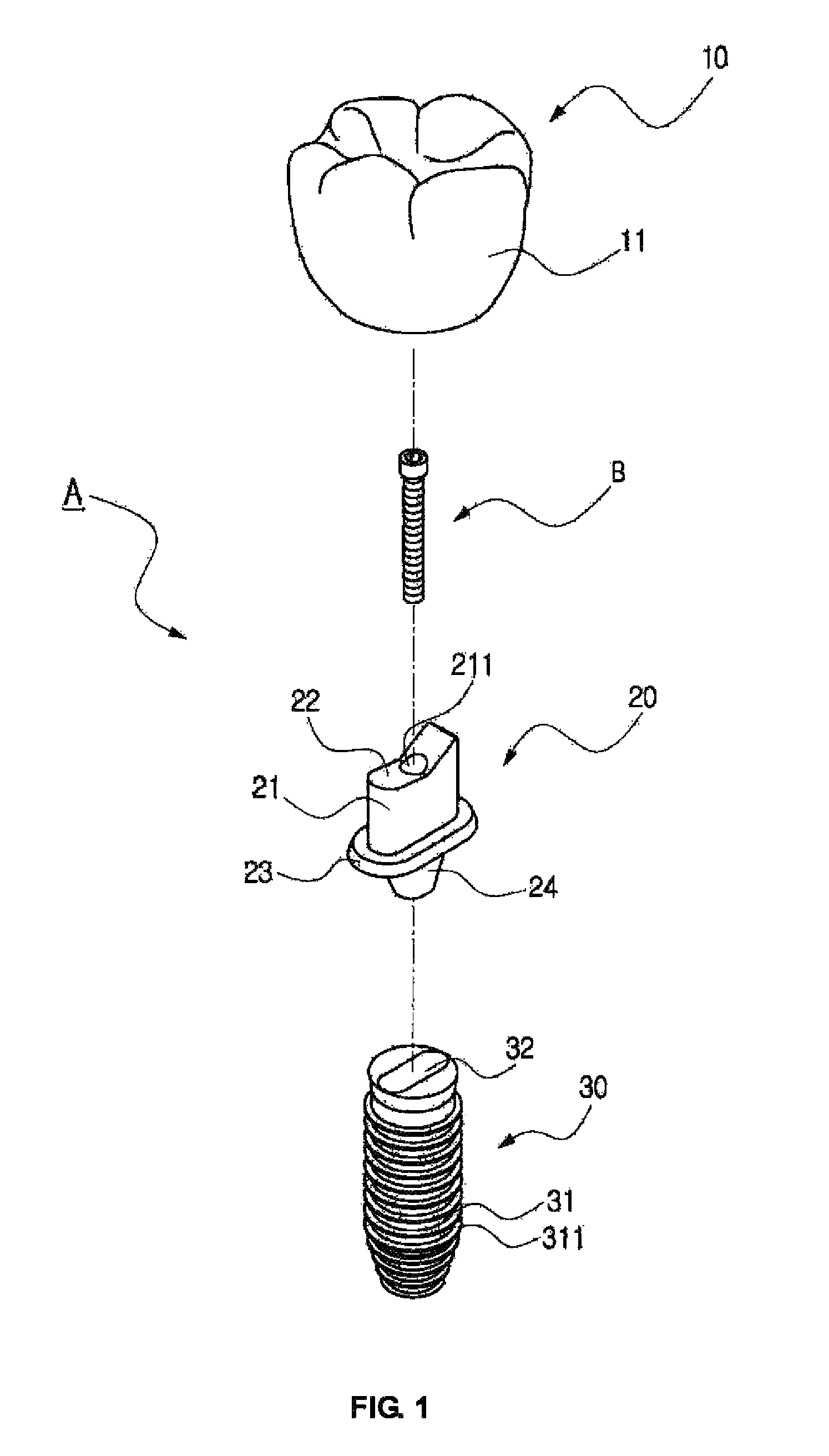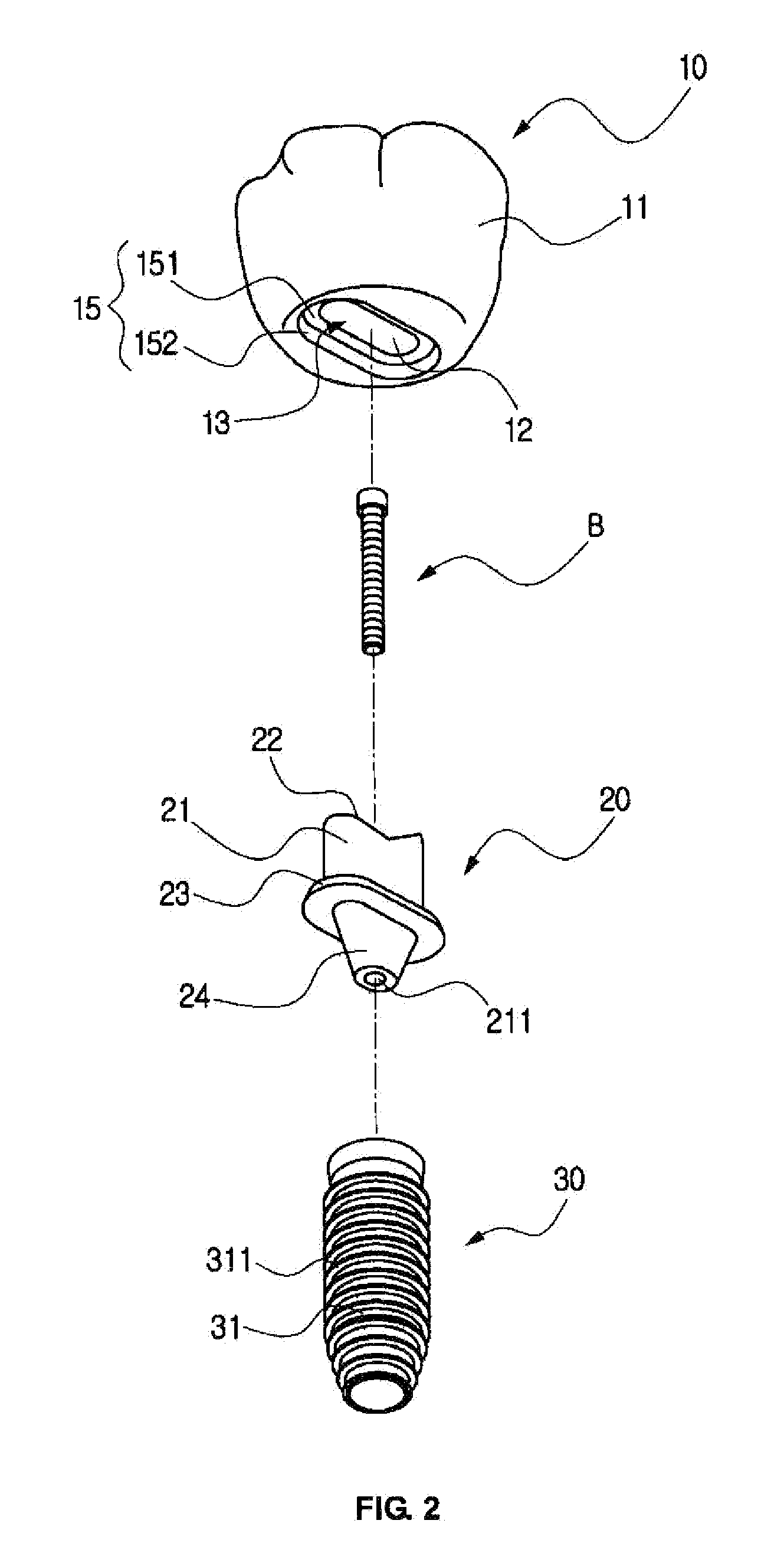Functional implant
a functional and implant technology, applied in the field of functional implants, can solve the problems of delaying the surgery time, additional teeth damage, and the tooth root is not easily removed from the artificial tooth root, so as to prevent additional teeth damage, reduce the amount of shock applied, and facilitate separability
- Summary
- Abstract
- Description
- Claims
- Application Information
AI Technical Summary
Benefits of technology
Problems solved by technology
Method used
Image
Examples
Embodiment Construction
[0030]Hereinafter, an explanation on a functional implant according to the present invention will be in detail given with reference to the attached drawings.
[0031]As shown in FIGS. 1 to 5, a functional implant A according to the present invention includes a fixture 30 screw-coupled to a tooth extraction hole 61 formed on an alveolar bone 60, an abutment 20 coupled to the fixture 30 by means of a bolt B in such a manner as to allow the lower portion thereof to be fitted to the upper portion of the fixture 30, and a crown 10 detachably coupled to the abutment 20 coupled to the fixture 30 by means of the bolt B.
[0032]In this case, the crown 10 is formed by means of milling so as to have the same shape as the existing tooth and has a crown body 11 and an abutment insertion recess 12 formed inside the crown body 11 in such a manner as to be open on the underside of the crown body 11.
[0033]The crown 10 is made of zirconium dioxide ZrO2 and concave on the center of the upper portion thereo...
PUM
| Property | Measurement | Unit |
|---|---|---|
| height | aaaaa | aaaaa |
| sizes | aaaaa | aaaaa |
| thickness | aaaaa | aaaaa |
Abstract
Description
Claims
Application Information
 Login to View More
Login to View More - R&D
- Intellectual Property
- Life Sciences
- Materials
- Tech Scout
- Unparalleled Data Quality
- Higher Quality Content
- 60% Fewer Hallucinations
Browse by: Latest US Patents, China's latest patents, Technical Efficacy Thesaurus, Application Domain, Technology Topic, Popular Technical Reports.
© 2025 PatSnap. All rights reserved.Legal|Privacy policy|Modern Slavery Act Transparency Statement|Sitemap|About US| Contact US: help@patsnap.com



